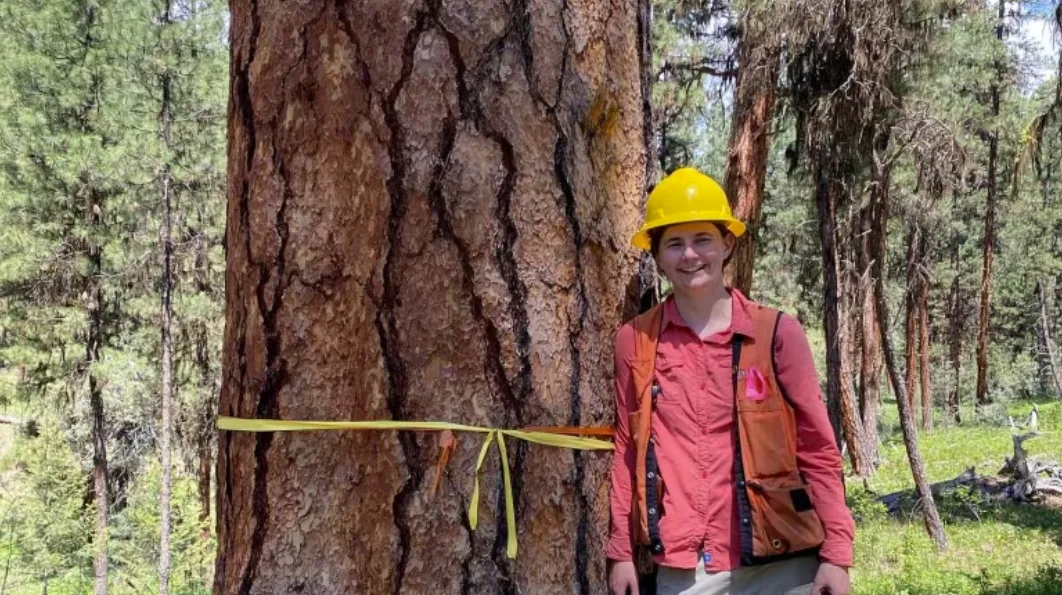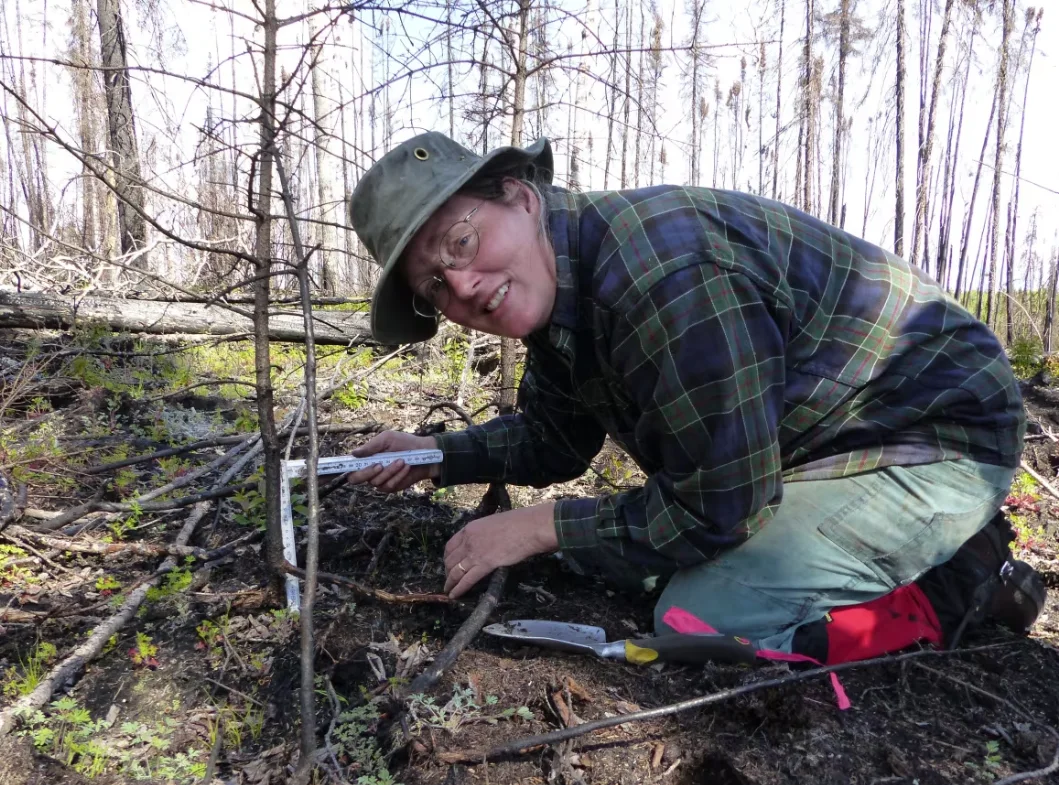
An Oregon tree study could help northern forests weather the climate crisis
Wildfires have long been known to burn large swaths of forests, wreaking havoc on tree canopies and communities that the forests surround, but a new study from Oregon State University says there hasn't been enough consideration of how heat can impact the growth of new trees.
The research, published in the Canadian Journal of Forest Research, studies the stresses that temperature spikes can have on young trees, also known as seedlings.
Researchers developed a metric known as Stress-Degree Hours (SDH), which measures the stress that higher than average temperatures over a given period of time can have on young plants.
Data was gathered using Douglas fir seedlings in western Oregon, during the region's heat dome in 2021.
SEE ALSO: Long-standing weather records fell across Canada during July
"Our data from that really shows the role that extreme events will probably play in our ecosystems moving forward with climate change and global change," said Amanda Brackett, an Oregon State University faculty research assistant who led the study.
Brackett said in the context of forest management, it's important to retain higher levels of canopy cover to better protect seedlings.
The study shows that for every 10 per cent increase in canopy cover, maximum temperatures two centimetres above the ground decreased by 1.3 C.
The Yukon's own tree species, such as the white and black spruce, are likely to have lower heat resilience than that of the Douglas fir because they are less adapted to higher temperatures, Brackett said.
She also said the SDH metric could help researchers better understand which temperatures are most hazardous for northern species.

Amanda Brackett of Oregon State University led a study focused on the impacts of temperature spikes on the growth of new trees as forests attempt to recover. The study focused on Douglas fir trees in western Oregon. (Submitted by Amanda Brackett)
Northern value
Some say the Oregon-centric research could be highly valuable in informing Yukon forestry operations.
Jill Johnstone, founder of the Whitehorse-based Northern Plant Ecology Lab, said that within northern Canada, failure of trees to regenerate after a fire is becoming more common. Johnstone noted a related decline in conifer seedling density.
DON'T MISS: We only need to protect 1.2% of world's surface to stop mass extinction
"We're cutting fuel breaks around communities to reduce fire risk, and there are different ways that those fuel breaks can be designed," Johnstone said. "The research in this study is really helpful to the thinking about the potential implications for our own forest harvest planning."
According to Parks Canada's website, a forest fuel break is when coniferous trees and other wood that could catch fire are removed from a forest floor. Johnstone said that spruce and pine, both of which are prominent in Yukon forests, are the best fuel for wildfires.
One possible solution to improving canopy cover while combating forest fires is the implementation of shaded fuel breaks. The Yukon government defines these particular fuel breaks as areas where coniferous trees are removed and/or spaced out while more fire resistant deciduous trees, such as aspen and birch, are kept.
Johnstone said it has been common within the forestry industry to discourage the growth of these deciduous species as they reduce light to conifer seedlings.
She said aspen and birch trees can help grow the canopy quicker, as they grower faster than coniferous trees such as pine and spruce.

Jill Johnstone, the founder of the Northern Plant Ecology Lab, says that the study could help with future forestry projects, such as an ongoing collaboration with Teslin Tlingit Council. (Nicole Lavergne-Smith/CBC)
Slopes in all directions
Brackett, who conducted the research as part of her master's degree, said the study could have been strengthened had researchers been able to monitor the seedlings over a longer period of time.
Johnstone said there are a few "next steps" that could be taken to make the study more applicable across a broader range of regions, including studying the impacts of temperature on other directionally facing slopes.
The study itself focused on south-facing slopes in western Oregon, but the Yukon-based researcher said studying other directional slopes could help with adapting forest management approaches across a variety of landscapes.
MUST READ: Canada wildfires blamed for rise in global loss of tree cover outside of tropics
The study used temperature sensors to capture climate conditions close to ground level, where air temperatures are more heavily influenced by soil surface temperatures and better represents the climates experienced by young seedlings. According to the study, it is at this stage that seedlings are most at danger of heat damage.
In the future, Brackett hopes to combine temperature data with moisture data from the soil and humidity. She said moisture can be a notable factor in a plant's response to heat.
Johnstone said the ideas presented within the paper could have an impact on projects she is currently working on, notably, a collaboration between the Northern Plant Ecology Lab and the Teslin Tlingit Council.
"The type of forest that gets encouraged could depend on this, trying to build in more climate resilience," Johnstone said. "The ideas presented in this paper could be really useful for us to explore in Teslin about whether we should be doing full canopy removal when these areas are harvested, or if a partial canopy removal with trees left for shade would help support this generating force."
Thumbnail image credit to Jill Johnstone via CBC News.
This article, written by Liam Baker, was originally published for CBC News.










